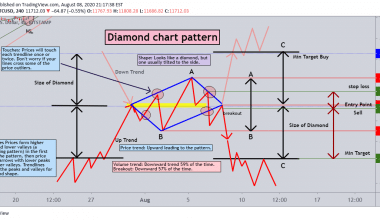Many financial experts extol the virtues of index funds. However, if you are a new investor, you may not fully comprehend what an index fund is or why it outperforms the alternative. As with many aspects of personal finance, there is no one-size-fits-all list of the best index funds. The best index fund for you to invest in will be determined by your specific circumstances. But we can point you in the right direction. Today, we’ll discuss the best index funds to invest in as you begin to build a portfolio in 2023.
This is a list of potential investment opportunities that are more likely to be a good fit than other Wall Street index funds. Furthermore, we’ll provide some information to help you understand what to look for as you branch out and explore other index funds to invest in the future. Let’s get started.
What is an Index Fund?
Simply put, a “fund” is a collection of securities (such as stocks or bonds) that allows you to implement a broader strategy with a single holding. An “index fund” is a more specific type of fund: one that is guided by a simple benchmark (an “index” governed by certain rules) to achieve that strategic goal.
There are thousands of index funds out there to invest in, each with a unique approach. However, whether you’re talking about a stock market index fund linked to a popular benchmark (such as the Dow Jones Industrial Average) or bond index funds linked to U.S. Treasuries, the basic approach is the same: The fund simply holds a collection of securities linked together by some rules and a common thread.
Why are Index Funds a Popular Investment?
Index funds are popular among investors because they promise broad stock ownership, greater diversification, and lower risk—all at a low cost. As a result, many investors, particularly beginners, believe that index funds are superior investments to individual stocks.
- Attractive returns: Major indexes, like all stocks, will fluctuate. However, over time, indexes have produced solid returns, such as the S&P 500’s long-term annual return of about 10%. That doesn’t mean index funds make money every year, but it has been the average return over long periods.
- Diversification: Index funds are popular among investors because they provide immediate diversification. Investors can own a diverse range of businesses with a single purchase. One share of an S&P 500 index fund provides ownership in hundreds of companies, whereas one share of a Nasdaq-100 fund provides exposure to approximately 100 companies.
- Lower risk: Because index funds are diversified, they are less risky than owning a few individual stocks. That doesn’t mean you can’t lose money or that they’re as safe as say a CD, but the index will typically fluctuate much less than an individual stock.
- Low cost: Because index funds have a low expense ratio, they can charge very little for these benefits. For larger funds, you may be charged $3 to $10 per year for every $10,000 invested. One fund (described below) has no expense ratio at all. When it comes to index funds, one of the most important factors in your total return is the cost.
Index Funds to Invest in 2023
The following list includes index funds to invest in from a variety of companies that track a broadly diversified index, as well as some of the lowest-cost funds available on public markets. One of the most important factors in your total return when it comes to index funds like these is cost.
#1. Fidelity ZERO Large Cap Index (FNILX)
The Fidelity ZERO Large Cap Index mutual fund is part of the investment firm’s foray into no-expense-ratio mutual funds, hence the ZERO moniker. The fund does not officially track the S&P 500; instead, it follows the Fidelity U.S. Large Cap Index, but the distinction is purely academic. The real difference is that investor-friendly Fidelity does not have to pay a licensing fee to use the S&P name, lowering investor costs.
#2. Vanguard S&P 500 ETF (VOO)
The Vanguard S&P 500, as the name implies, tracks the S&P 500 index, and it is one of the largest funds on the market to invest in, with hundreds of billions in the fund. This ETF debuted in 2010 and is backed by Vanguard, one of the fund industry’s powerhouses.
#3. SPDR S&P 500 ETF Trust (SPY)
The SPDR S&P 500 ETF is the grandfather of ETFs, having been established in 1993. It was instrumental in launching the current wave of ETF investing. It is one of the most popular ETFs, with hundreds of billions of dollars in assets. The fund is sponsored by State Street Global Advisors, another industry heavyweight, and it tracks the S&P 500.
The iShares Core S&P 500 ETF is sponsored by BlackRock, one of the largest fund companies. This iShares fund, which tracks the S&P 500, is one of the largest ETFs. This fund, which was founded in 2000, is another long-term player that has closely tracked the index over time.
#5. Schwab S&P 500 Index Fund (SWPPX)
The Schwab S&P 500 Index Fund, with tens of billions of dollars in assets, is on the smaller side of the heavyweights on this list, but that’s not a big deal for investors. This mutual fund has a solid track record dating back to 1997, and it is sponsored by Charles Schwab, one of the industry’s most reputable names. Schwab is known for creating investor-friendly products, as evidenced by this fund’s ultra-low expense ratio.
#6. Shelton NASDAQ-100 Index Direct (NASDX)
The Shelton Nasdaq-100 Index Direct ETF tracks the performance of the Nasdaq-100 Index’s largest non-financial companies, which are primarily technology companies. This mutual fund debuted in 2000 and has a strong track record over the last five and ten years.
#7. Invesco QQQ Trust ETF (QQQ)
The Invesco QQQ Trust ETF is another index fund that tracks the performance of the Nasdaq-100’s largest non-financial companies. This ETF was launched in 1999 and is managed by Invesco, a fund giant. According to Lipper, this fund is the best-performing large-cap growth fund in terms of total return over the 15 years ending September 2022.
#8. Vanguard Russell 2000 ETF (VTWO)
The Vanguard Russell 2000 ETF tracks the Russell 2000 Index, which is comprised of approximately 2,000 of the smallest publicly traded companies in the United States. This Vanguard ETF began trading in 2010, and it focuses on keeping investment costs low.
#9. Vanguard Total Stock Market ETF (VTI)
Vanguard also offers the Vanguard Total Stock Market ETF, which effectively covers the entire universe of publicly traded stocks in the United States. It is made up of small, medium, and large businesses from various industries. The fund has been in existence since 2001 when it first began trading. And with Vanguard as a sponsor, you know the costs will be minimal.
#10. SPDR Dow Jones Industrial Average ETF Trust (DIA)
There aren’t many ETFs that track the Dow Jones Industrial Average, but State Street Global Advisors comes through with this fund that tracks the 30-stock index of large-cap stocks. The fund is unquestionably one of the first ETFs, having debuted in 1998, and it manages tens of billions of dollars.
#11. Fidelity 500 Index (FXAIX)
For good reason, Fidelity Investments’ flagship FXAIX fund remains one of the most popular S&P 500 index funds to invest in among US investors. With an expense ratio of 0.015%, or $1.5 in fees for a $10,000 investment, this fund provides exceptional value. With no transaction fees, sales loads, or minimum investments, Fidelity has made this fund extremely accessible to investors of all account sizes. Because the fund has been around since 1988, you can be confident in its long track record of competent management.
#12. Schwab US Dividend Equity ETF (SCHD)
Beginner investors seeking income should consider the Schwab US Dividend Equity ETF (SCHD), which offers a much higher-than-market-average dividend yield of 3.1% per year. This concentrated Schwab index fund has only 100 holdings, but as with many of the best beginner funds, simplicity is the goal. The Dow Jones U.S. Dividend 100 Index serves as a benchmark for SCHD, which searches the universe of the largest U.S. companies for high-yielding companies with a track record of consistently paying dividends.
While the majority of the other index funds on this list are ETFs, Vanguard’s bond mutual fund is less expensive, more diverse, and just as effective as its exchange-traded counterparts.
Bonds are a way for governments, corporations, and other organizations to raise funds. You purchase a bond from the United States government, and they agree to repay you (with interest) by a certain date. This interest rate is delivered in the form of a fixed “coupon payment,” which is usually made every six months.
#14. State Street S&P 500 Index Fund Class N (SVSPX)
State Street Global Advisors’ flagship SPDR S&P 500 ETF (SPY) is well-known, but it also offers SVSPX for investors who prefer mutual funds to ETFs. This fund is the “N” share class, which was introduced in December 1992. SVSPX, like most S&P 500 index funds, has a low turnover rate and diversification across all 11 stock market sectors. The fund pays out quarterly distributions and has a current yield of 1.51%.
How to Invest in an Index Fund in 3 Easy Steps
It’s surprisingly simple to invest in index funds, but you should know what you’re doing and not just buy random funds that you know nothing about.
#1. Investigate and evaluate index funds
The first step is to determine what you want to invest in. While the S&P 500 index fund is the most popular, there are others for various industries, countries, and even investment styles. So think about what you want to invest in and why it might be a good investment.
You should carefully examine what the fund is investing in so that you know what you own. The labels on index funds can be deceptive at times. However, you can look at the index’s holdings to see what’s in the fund.
#2. Select an index fund to purchase.
After you’ve found a fund you like, consider other factors that might make it a good fit for your portfolio. The expenses of the fund are significant factors that can make or break you tens of thousands of dollars over time.
#3. Get your index fund.
After you’ve decided which fund is best for your portfolio, the easy part begins: purchasing the fund. You have the option of purchasing directly from the mutual fund company or through a broker. However, buying a mutual fund through a broker is usually easier. If you want to buy an ETF, you’ll need to go through your broker.
Is Index Funds a Good Investment?
Most experts agree that index funds are excellent long-term investments. They are low-cost alternatives for obtaining a well-diversified portfolio that tracks an index passively.
Should a Beginner Invest in Index Funds?
Yes. A low-cost index fund is an excellent way for both novice and experienced investors to invest in the stock market.
How do Beginners Invest in Index Funds?
An index fund can be purchased directly from a mutual fund company or a brokerage. The same is true of exchange-traded funds (ETFs).
- Select an index.
- Select the appropriate fund for your index.
- Invest in index funds.
How Much Money do I Need for an Index Fund?
Because index funds typically have no minimum investment requirement, you can spread a small amount of money across several funds.
What is the Most Successful Index Fund?
The following are the most successful index funds:
- Fidelity ZERO Large Cap Index (FNILX)
- Vanguard S&P 500 ETF (VOO)
- SPDR S&P 500 ETF Trust (SPY)
- iShares Core S&P 500 ETF (IVV)
- Schwab S&P 500 Index Fund (SWPPX)
- Shelton NASDAQ-100 Index Direct (NASDX)
- Invesco QQQ Trust ETF (QQQ)
- Vanguard Russell 2000 ETF (VTWO)
How do I start an Index Fund?
Here’s how to start investing in index funds.
- Determine your index fund investment objectives.
- Select the best index fund strategy for your time frame.
- Investigate potential index funds.
- Establish an investment account.
- Invest in your first index fund.
- Make a plan to continue investing regularly.
- Plan your exit strategy.
Can I Invest $500 in an Index Fund?
Yes. Consider putting $500 into an individual retirement account (IRA), which allows you to invest in stocks, bonds, or mutual funds. If you don’t already have an IRA, $500 will get you started at most banks and credit unions. IRAs can also be opened at online brokerages and investment firms.
What is the Safest Index Fund?
The top safe index funds are as follows:
- Shares Core S&P 500 ETF
- Schwab S&P 500 Index Fund
- Shelton NASDAQ-100 Index Direct
- Invesco QQQ Trust ETF
- Vanguard Russell 2000 ETF
Conclusion
These are some of the best index funds to invest in on the market, providing investors with a low-cost way to own a diverse collection of stocks while still reaping the benefits of diversification and lower risk. With those advantages, it’s no surprise that these funds are among the largest on the market.
Related Articles
- Mutual Funds vs Index Funds: Difference, Formulas & Examples
- MARKET INTELLIGENCE: What Is It, Tools & Difference
- WHAT IS S&P 500? Best 2023 Guide & Business Insights
- LOW-COST INDEX FUNDS: Best 2023 Options & All You Need
- Best Index Funds: Top 13+ 2023 Picks for Beginners and Pros






